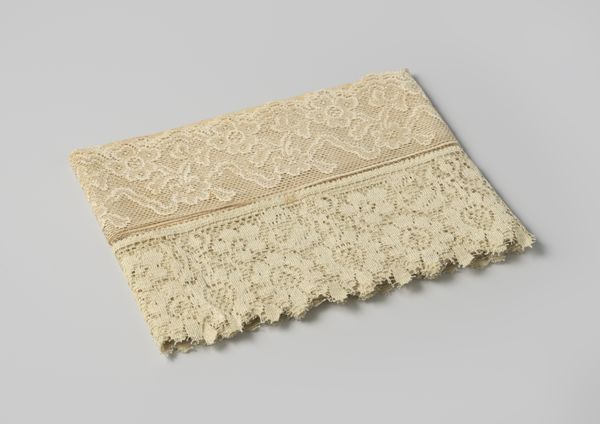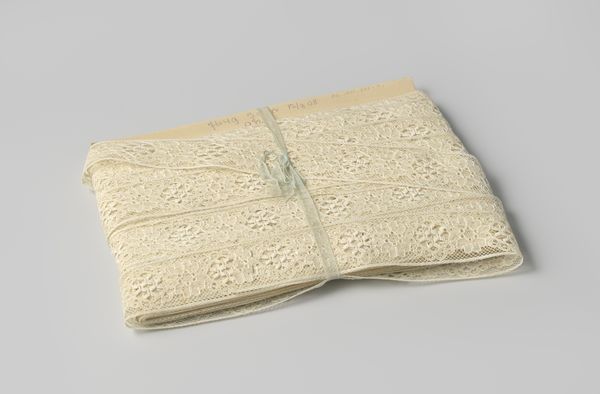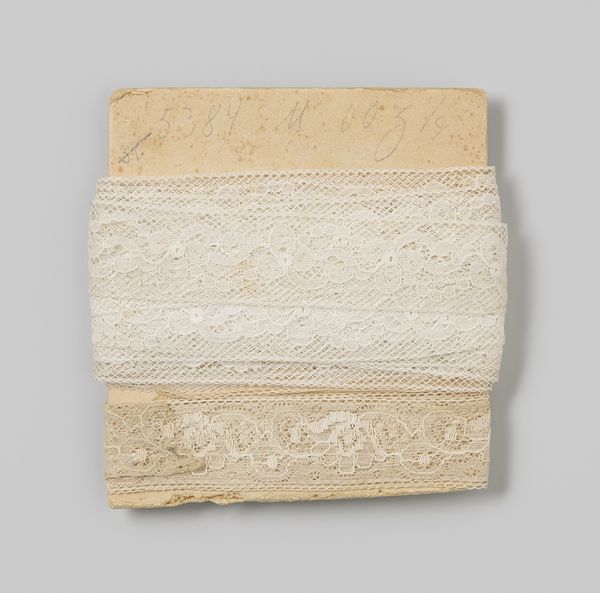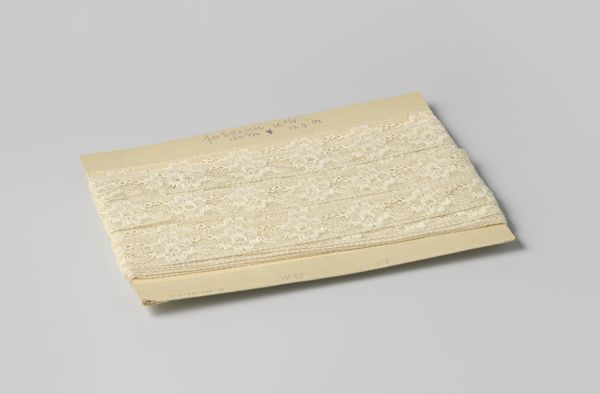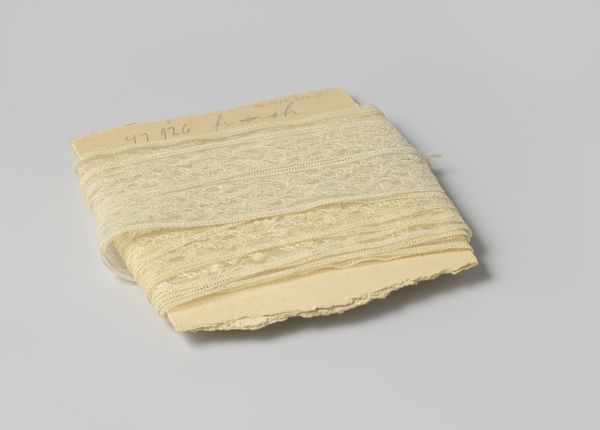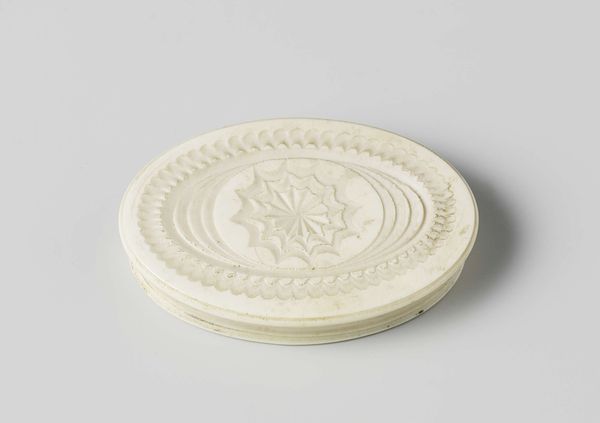
fibre-art, weaving, textile
#
fibre-art
#
pattern
#
weaving
#
textile
#
fabric design
#
decorative-art
Dimensions: width 4.3 cm, length 16.5 cm, width 10.5 cm
Copyright: Rijks Museum: Open Domain
Editor: This is "Tussenzetsel van wit kant," or "Insertion of White Lace," made around 1920. It's a beautiful example of fibre art. The detail is so intricate! What can you tell me about it? Curator: This piece opens a window into the world of textile production and its gendered history. Lace-making, traditionally a female occupation, often provided economic independence but also came with exploitation and limited social mobility. Consider the intense labour involved in creating such delicate patterns. Who made this? What were her working conditions? What socioeconomic factors might have been in play? Editor: I hadn't thought about the maker, just the finished object. So, the beauty of the lace contrasts with potentially harsh realities? Curator: Exactly. The decorative-art style can be deceptive. Think about the patterns, too. What stories do these repeating motifs tell? Are they purely aesthetic, or do they represent something deeper about the society that produced them, perhaps aspiration or confinement? How can we read its repeating forms through the lens of feminist theory? Editor: It makes me consider the lives of women in the 1920s and the artistry they poured into these crafts, whether out of passion, or necessity. Curator: And the politics embedded in those crafts! Recognizing that labor and understanding those social contexts are key to truly seeing this piece. Editor: I'll never look at lace the same way again.
Comments
No comments
Be the first to comment and join the conversation on the ultimate creative platform.

